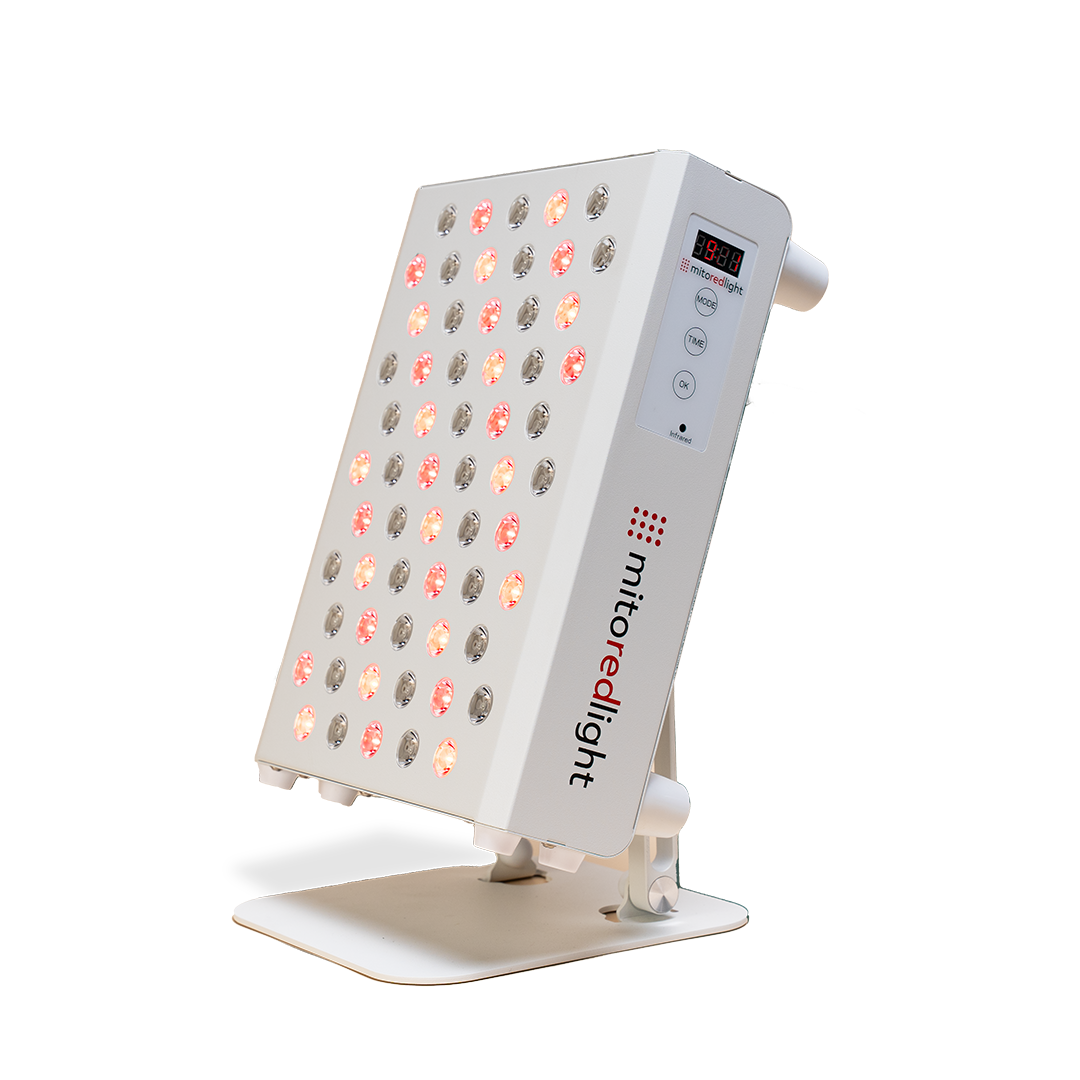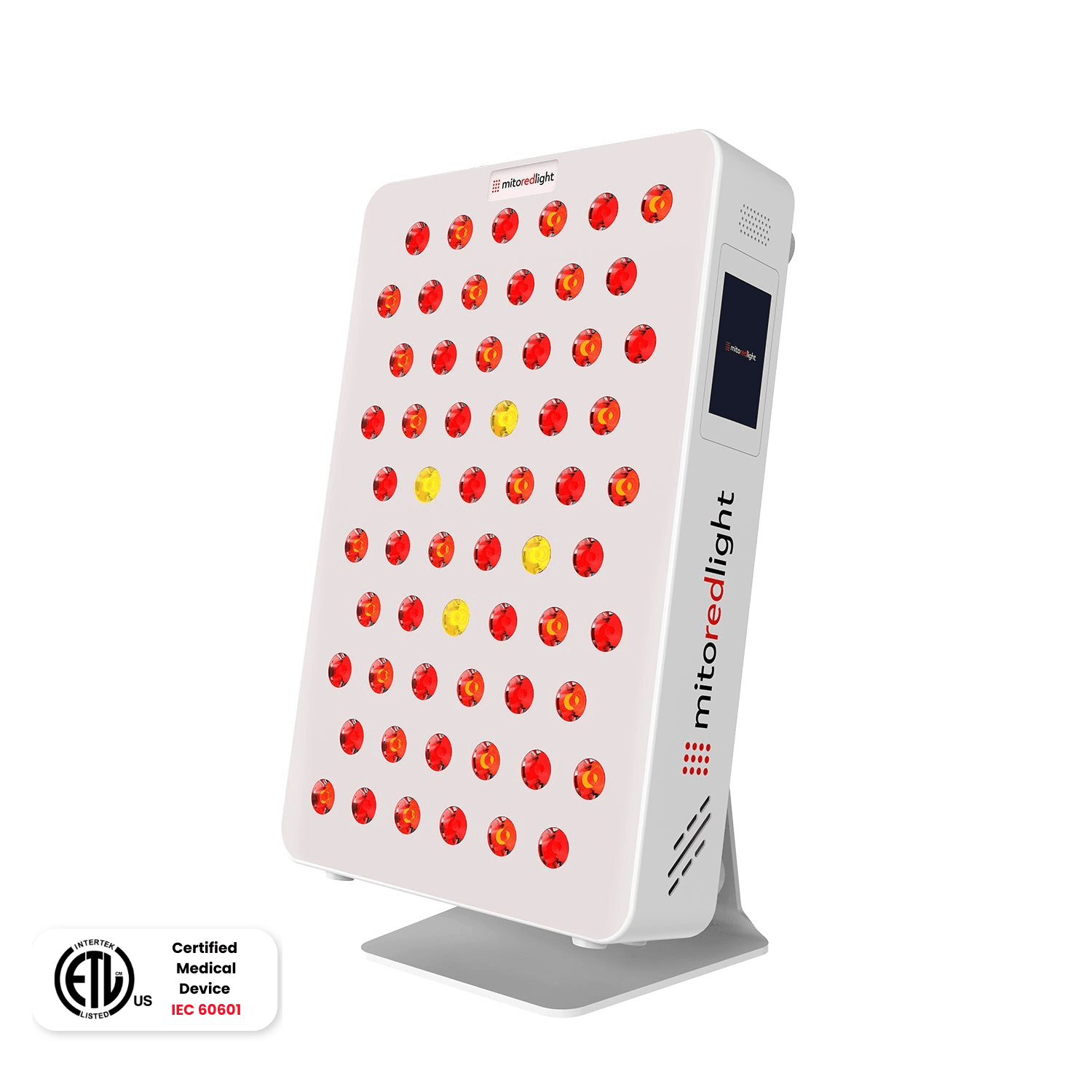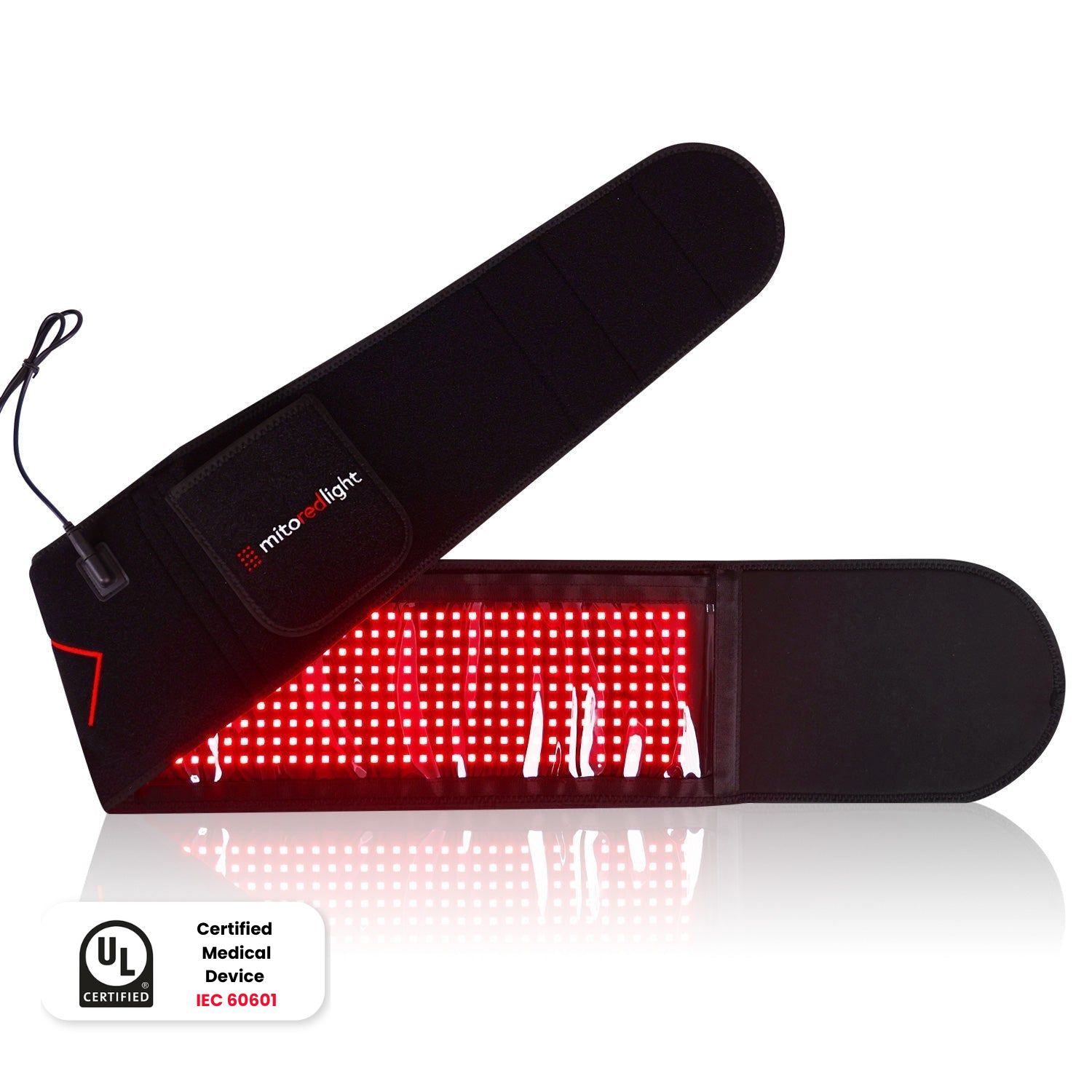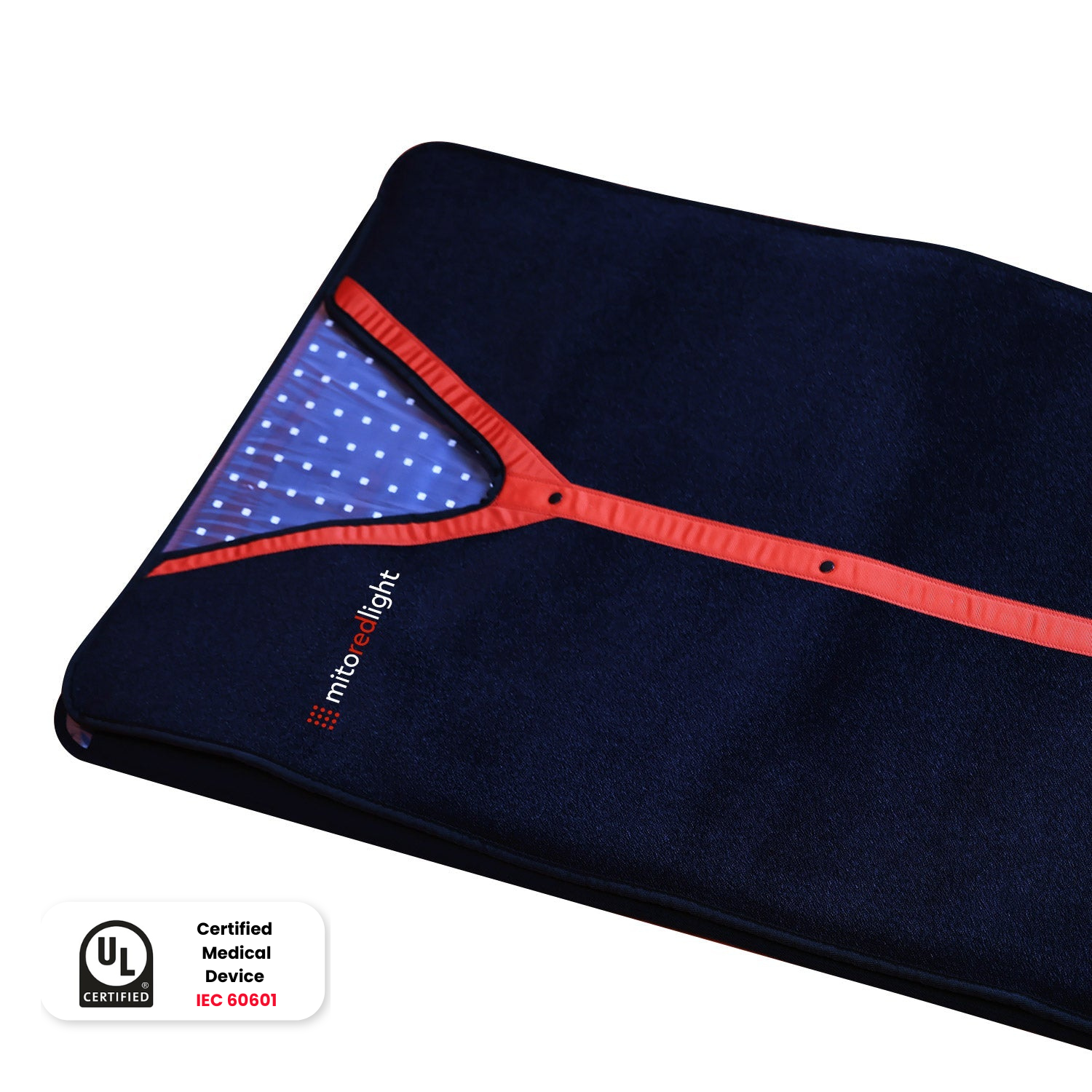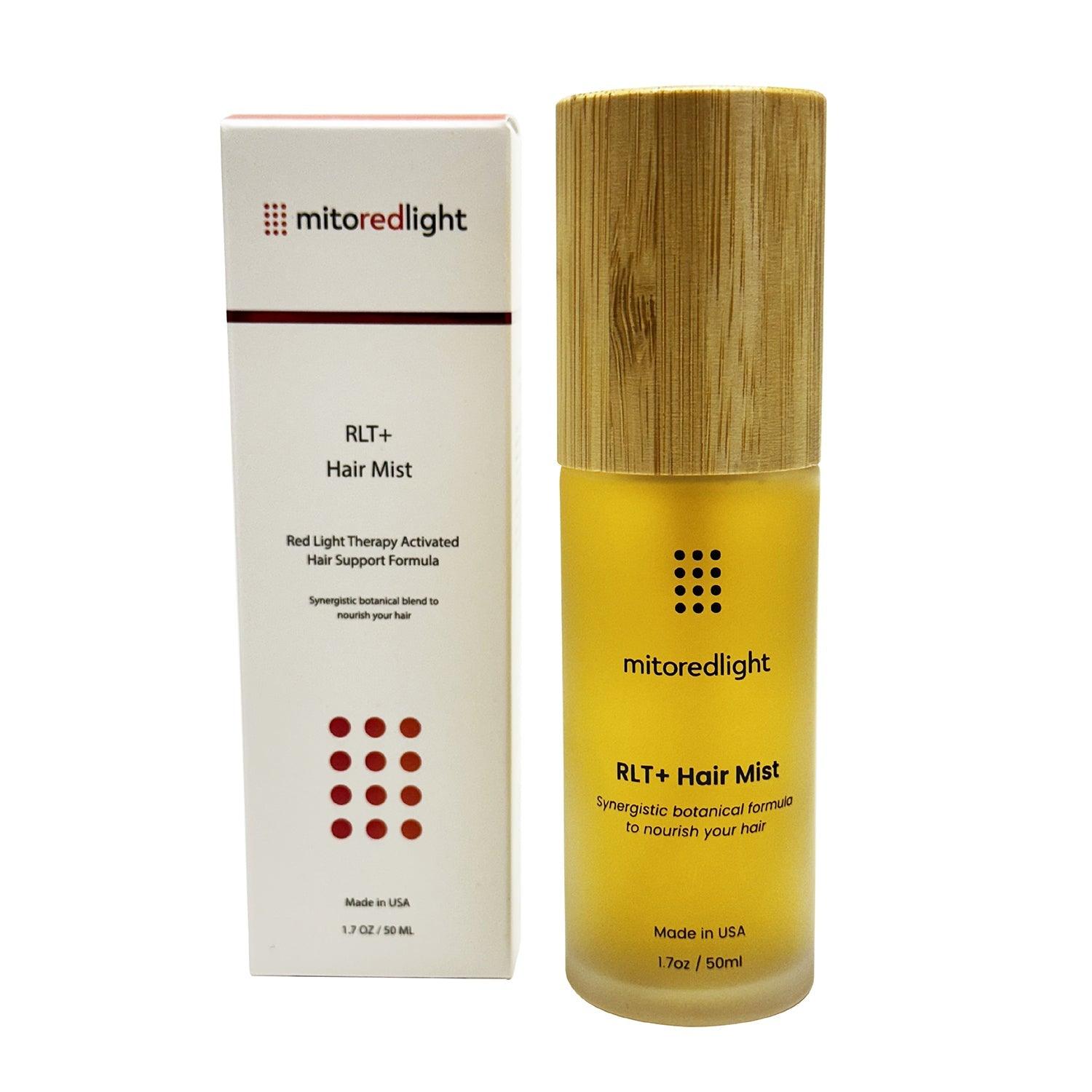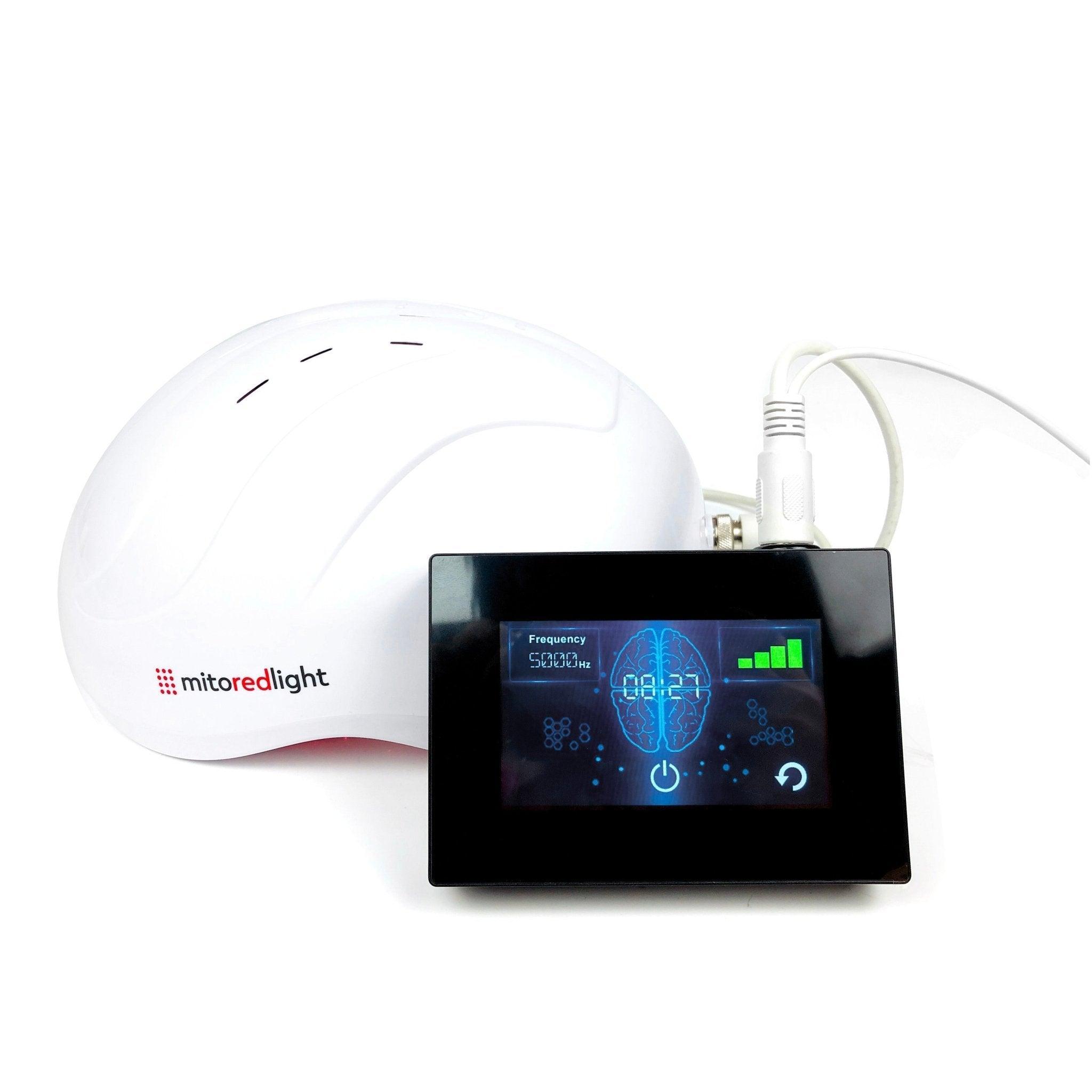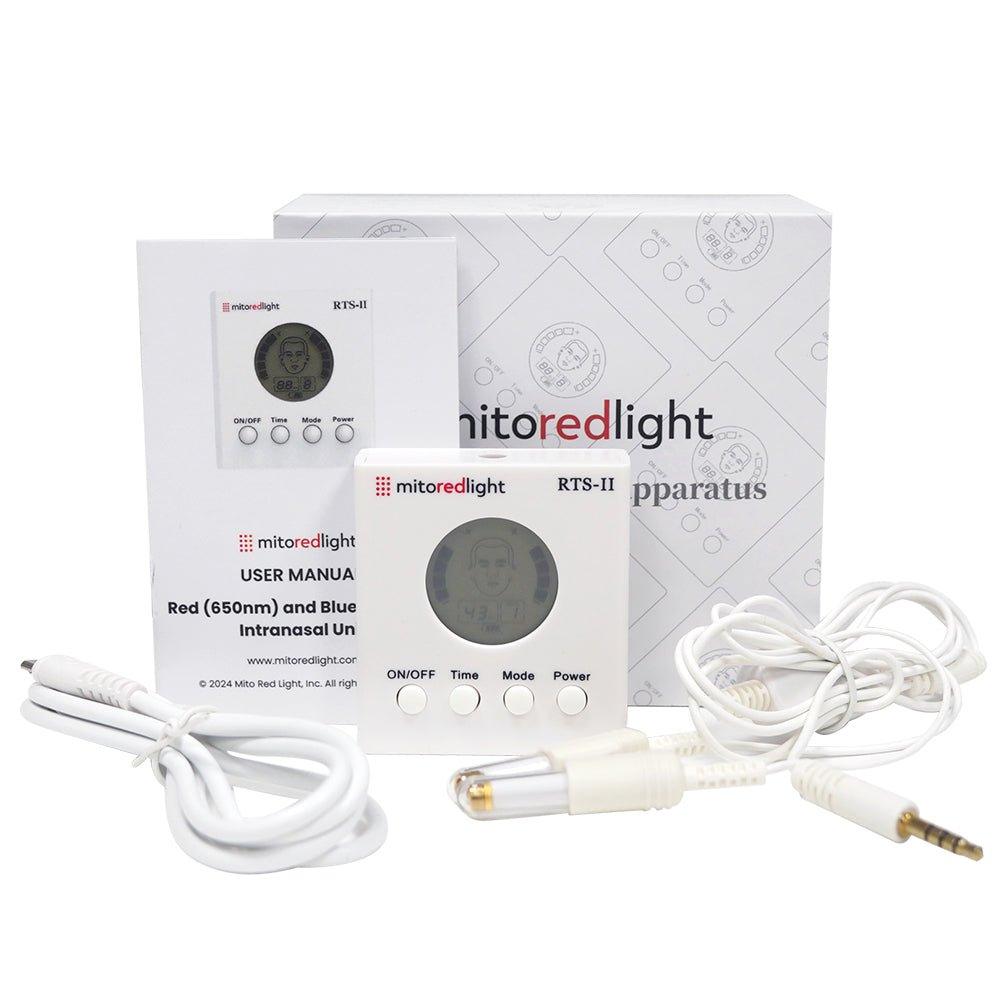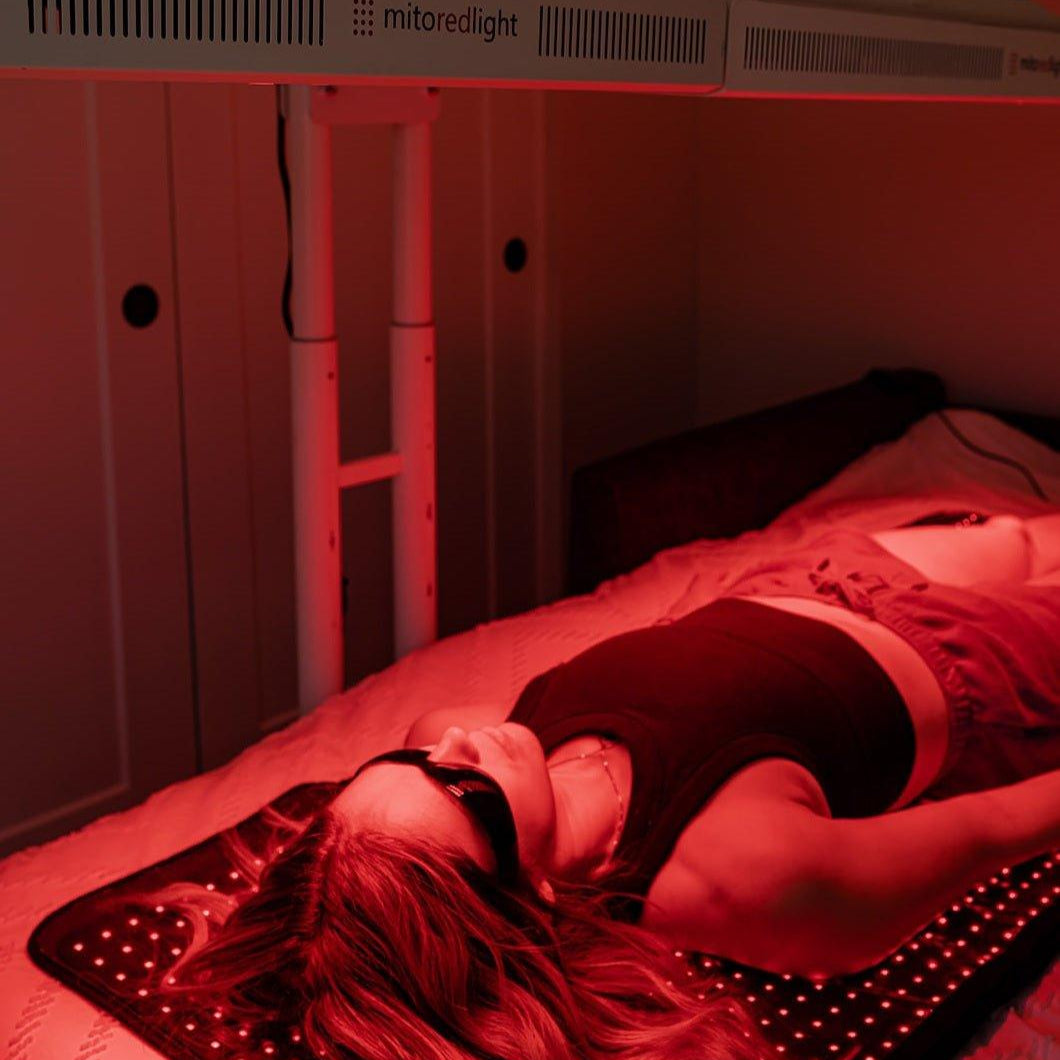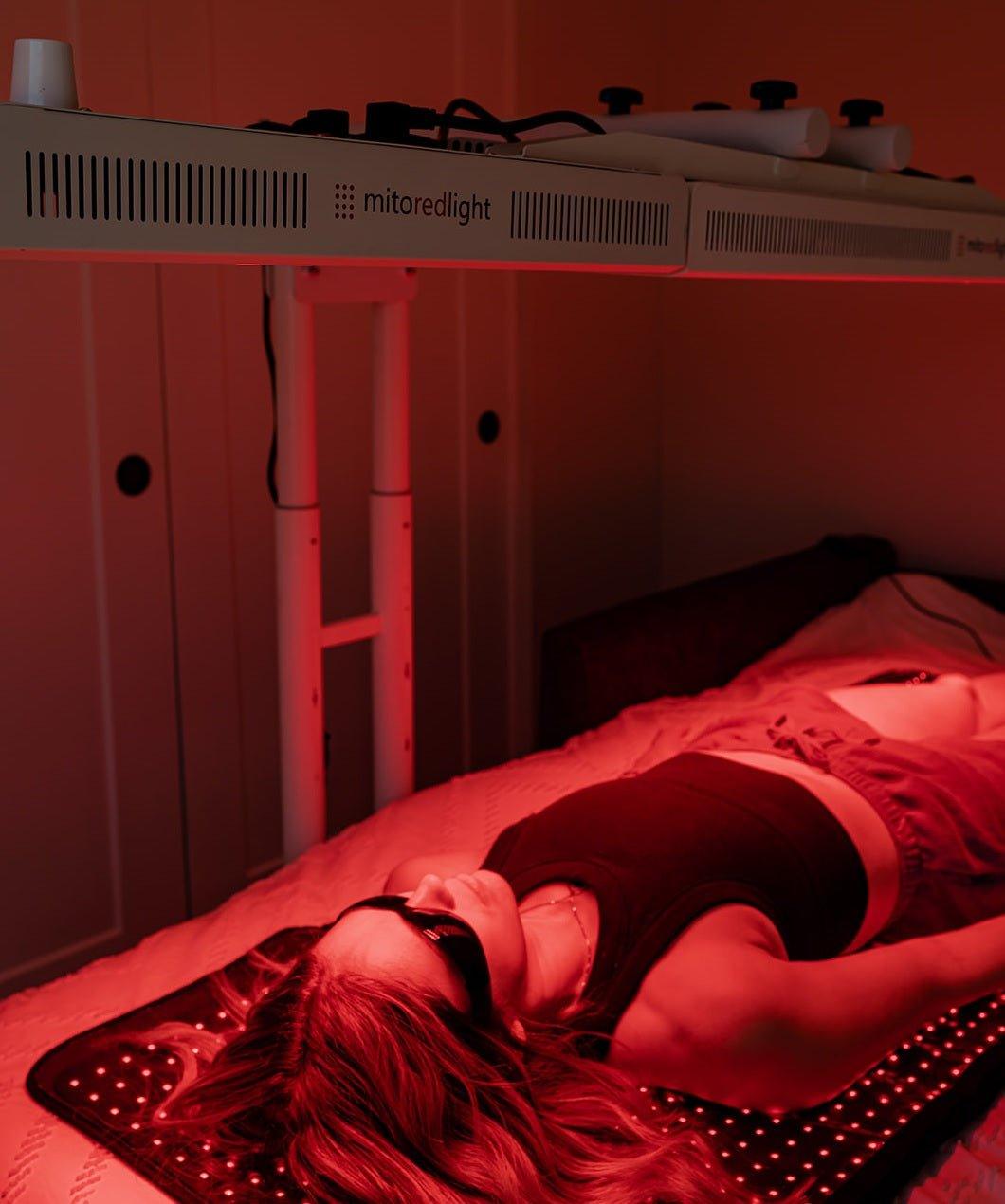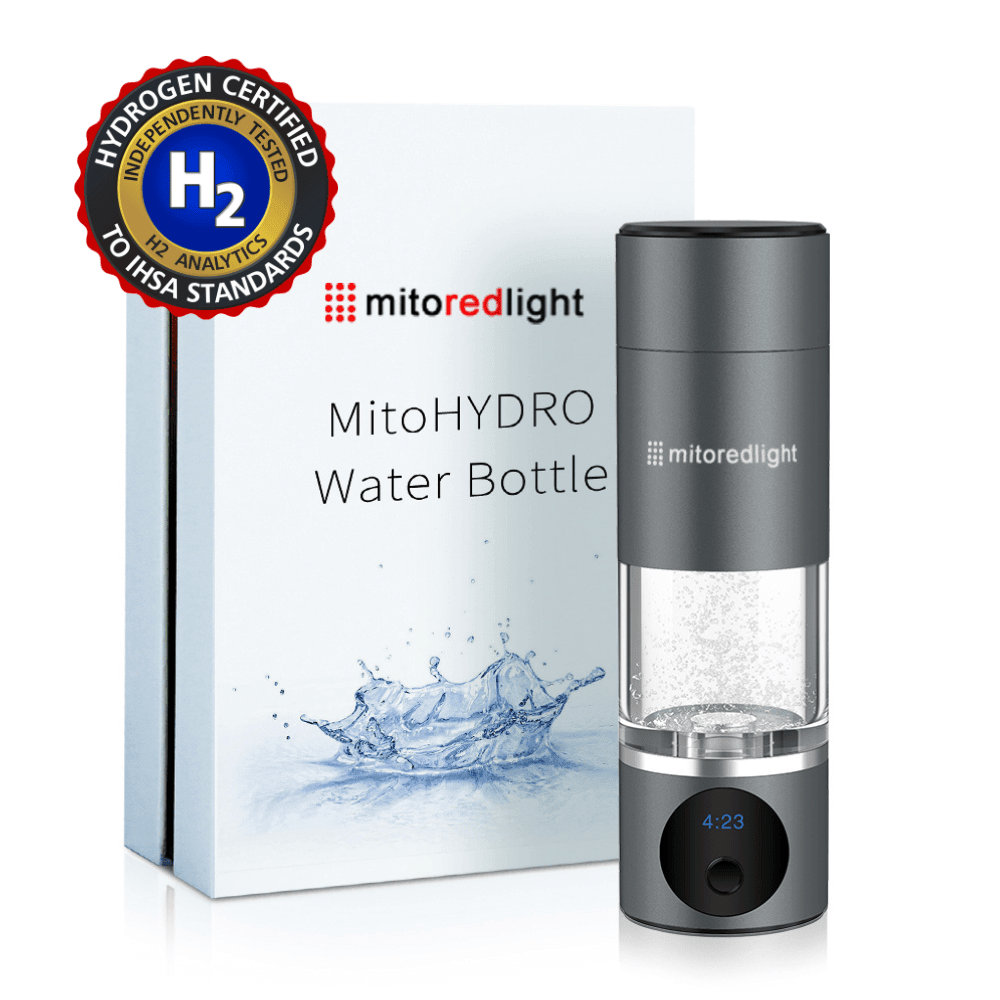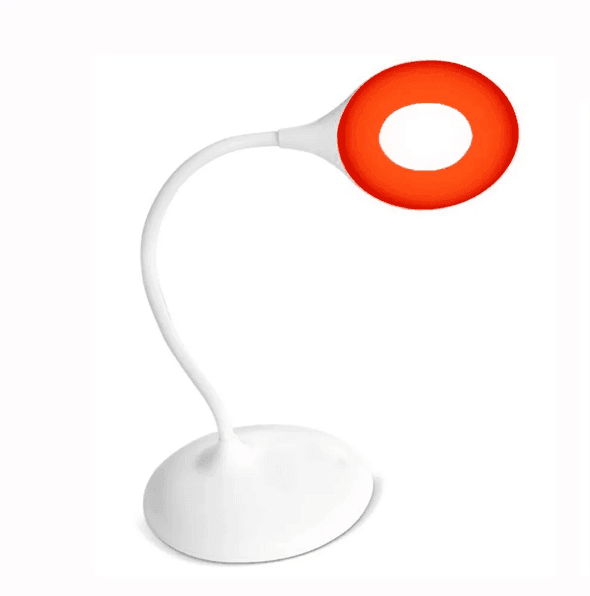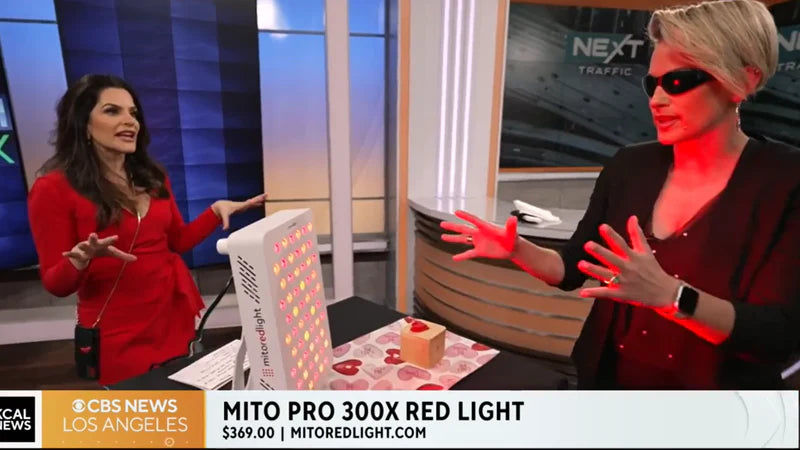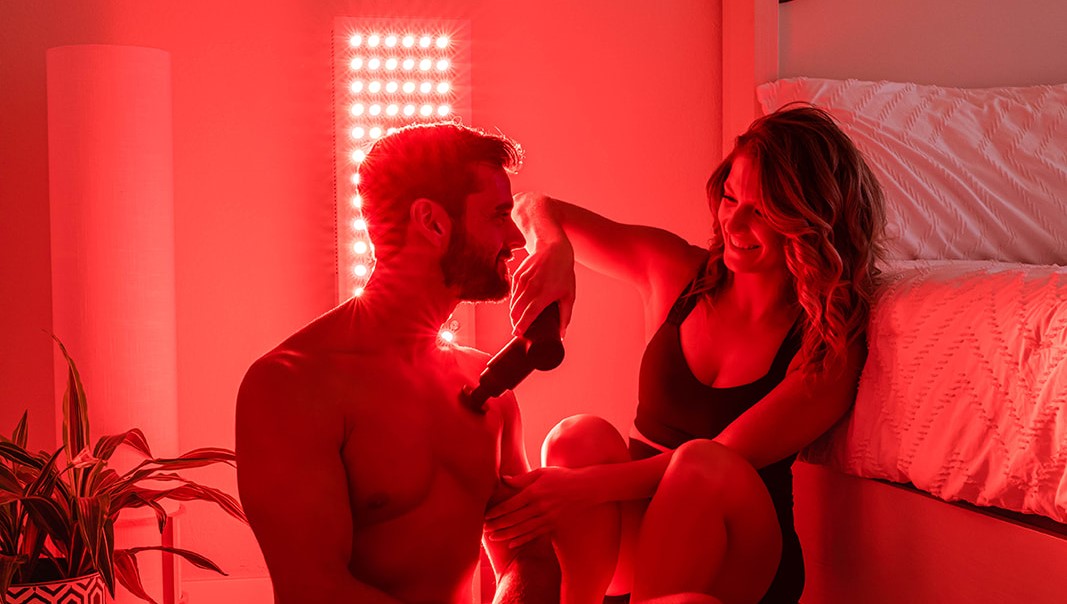Stretch marks and scars are part of life, but that doesn’t mean they have to stay front and center. Your skin has an incredible ability to repair itself when it gets the right kind of support, and that’s where red light therapy comes in.
This guide from Mito Red Light breaks down how to choose the right wavelength, how often to use it, and how to approach red light therapy safely.
What Is Red Light Therapy?
Red light therapy (RLT) is a non-invasive option that uses specific wavelengths of visible light (typically between 600 and 650 nanometers) to support skin repair and regeneration through photobiomodulation. In simple terms, it’s light energy absorbed by your cells to help them function better, faster, and more efficiently.
When red light reaches the skin, it can stimulate fibroblasts, the cells responsible for producing collagen and elastin. This boost in structural proteins can help improve skin firmness, elasticity, and texture over time. It also increases local circulation, which enhances nutrient delivery and speeds up healing.
Clinically, red light therapy has been shown to potentially help ease inflammation, fade scars, and soften the appearance of stretch marks by promoting healthier tissue formation beneath the skin’s surface. It works on both new and older marks and is suitable for all skin types, making it one of the most versatile tools in modern skin rejuvenation.
In short, red light therapy may support cellular healing, encourage a natural collagen boost, and support overall skin rejuvenation.
How To Choose the Right Red Light Therapy Device
The device you choose can make or break your results. Power, wavelength accuracy, and build quality all determine how effectively light reaches the skin and how consistent your outcomes will be.
For treating stretch marks and scars, look for devices that emit red light between 600-650nm and near-infrared (NIR) wavelengths up to 850nm. This range supports both surface-level skin rejuvenation and deeper cellular repair, giving you more comprehensive results over time.
At Mito Red Light, our devices feature ESPEO™ spectral technology, which blends multiple wavelengths for balanced tissue penetration, and each model is hand-inspected and IEC 60601 certified — the same international standard used for medical-grade safety. That means you can trust the precision, quality, and performance whether you’re using it at home or in a professional setting.
When comparing brands, look for features that prove quality and longevity, like medical-grade materials, third-party testing, strong warranties, and detailed dosing protocols. These ensure consistent light output and safer operation.
Mito Red Light devices are engineered for both home users and wellness professionals, combining clinical precision with intuitive design. Each unit is built to deliver reliable performance session after session, giving you the confidence to focus on results instead of maintenance.
How To Prepare Your Skin for Effective Red Light Therapy
How you prep your skin before a red light session makes a big difference in how well the light actually works. If there’s makeup, lotion, or even a thin film of oil on your skin, that light can’t fully penetrate.
Start each session with clean, dry skin. Use a gentle cleanser and skip moisturizers, serums, or sunscreen right before your session. If you’ve been sweating, wash and pat dry to remove any buildup that could reflect or block light absorption.
If you’re new to red light therapy or have sensitive skin, patch test on a small area first to make sure you tolerate the light well. If you have any active wounds or conditions like eczema or rosacea, talk to your dermatologist before starting, especially if you plan to target those areas directly.
Here’s a simple pre-session checklist:
- Cleanse skin thoroughly and pat dry
- Remove all makeup, sunscreen, and lotions
- Avoid self-tanner or heavy oils before sessions
- Cover or avoid open wounds per device guidelines
- Patch test if you’re new or have sensitive skin
Prepping the right way ensures the light hits its target: your skin cells. That’s where collagen production and repair begin.
How To Form a Safe and Consistent Red Light Therapy Schedule
Results come from consistency, not intensity. Red light therapy works best when it’s part of your weekly routine rather than a one-time fix.
For most users, two to three sessions per week, lasting 10-20 minutes each, is the sweet spot to start. As your skin adapts, you can increase session length or frequency based on comfort and results.
For sensitive or first-time users, shorter sessions (around 8-10 minutes) help your skin acclimate. Over several weeks, you can build up gradually to longer durations or daily use if your skin responds well.
Always follow your device’s manufacturer guidelines. Mito Red Light panels are engineered for safe, optimized exposure, and our usage protocols help you track timing, distance, and wavelength for each zone.
Red light therapy works cumulatively, so even shorter, regular sessions will deliver better results than long, infrequent ones. Stay consistent, track your progress, and let your skin respond naturally to the light’s regenerative effects.
Monitoring Your Progress and Adjusting Therapy
Consistency is where results start, but tracking progress is how you make them last. The easiest way to stay accountable is to document your routine.
Take clear, natural-light photos before starting red light therapy, then again every few weeks from the same angle. Keep notes on your session dates, different areas, and how your skin feels afterward.
Over time, you’ll likely start noticing subtle changes first, like smoother texture, less tightness around scars, or fading along the edges of stretch marks. With continued sessions, those changes compound into a visible transformation.
If progress slows, don’t overhaul everything at once. Small adjustments go a long way. You can increase session frequency slightly, fine-tune your distance from the panel, or extend duration within your comfort range.
Red Light Therapy Safety During Pregnancy
For expecting or postpartum users, safety comes first. Red light therapy uses non-ionizing, low-energy light, meaning it doesn’t carry enough power to damage DNA or harm cells. It’s considered safe for skin and tissue when used correctly and has no known adverse side effects according to current evidence.
That said, research on red light therapy specifically during pregnancy remains limited. As a precaution, anyone pregnant or breastfeeding should always speak with their OBGYN or healthcare provider before starting or continuing sessions.
If you’re cleared to use it, focus on safe zones like the face, neck, or upper body. Avoid direct use on the abdomen and lower back, where light exposure hasn’t been studied in detail. Always follow your device’s distance and timing recommendations, and opt for shorter sessions until you know how your body responds.
At Mito Red Light, we prioritize science-backed safety as much as results. Our devices undergo rigorous third-party testing and medical-grade certification to help users feel confident in every session, especially during seasons of change like pregnancy and postpartum recovery.
Combining Red Light Therapy With Other Skincare
Red light therapy fits seamlessly into most skincare routines, making it easy to pair with other strategies for enhanced results. The key is knowing what works together and when to give your skin space to recover.
Some of the best combinations include microneedling, topical actives like vitamin C or hyaluronic acid, and professional laser treatments. Microneedling helps create microchannels in the skin, allowing red light to reach deeper layers more effectively. Pairing RLT with hydrating or collagen-supporting serums may also help prevent or minimize stretch marks by improving elasticity and supporting repair over time.
If you’re combining topicals, timing matters. Apply serums after your red light session to ensure nothing blocks light absorption during sessions. Red light therapy itself doesn’t irritate your skin or cause sensitivity like chemical peels or laser resurfacing can, so it’s a safe complement for most routines.
Patch test any new product or treatment first. Everyone’s skin tolerance is different, and layering multiple therapies at once can sometimes backfire without guidance. If you’re unsure, consult a dermatologist or aesthetic professional about sequencing, especially if you’re already using prescription retinoids or undergoing clinical treatments.
Red light therapy works best as part of a balanced, consistent approach to skin health. When used alongside the right products and professional care, it amplifies results while keeping your skin calm, strong, and visibly renewed.
The Bottom Line
Your skin knows how to heal — it just needs the right signal. Red light therapy gives it that cue, activating the same biological processes your body already uses to repair and renew. With consistent use, it can help fade stretch marks, soften scar tissue, and bring back smoother, stronger, more even-toned skin.
At Mito Red Light, every device we build is designed with precision wavelengths, safety certifications, and proven results in mind, because skin health deserves more than guesswork.
Whether you’re easing postpartum changes, targeting long-standing scars, or simply supporting your skin’s resilience, consistent light exposure with a clinically engineered system makes all the difference.
Ready to see it for yourself? Explore our red light therapy panels and experience what science-backed skin recovery really looks like.
DISCLAIMER : Mito Red Light devices are Class II wellness devices aimed at affecting the body through supporting cellular function. The information provided in this article and on this site is for educational purposes only and is not intended to imply effectiveness of Mito Red Light devices for any specific application. The information provided in this article and on this site is not intended to diagnose, treat, cure, or prevent any disease, is not a substitute for consultation with a licensed medical provider and should not be construed as medical advice. Click here to read our article on potential contraindications of red light therapy.
FAQs
Does red light therapy effectively reduce stretch marks and scars?
Yes. Red light therapy helps fade stretch marks and scars by stimulating collagen and elastin production, improving circulation, and supporting natural tissue repair. Over time, this process smooths skin texture and softens discoloration for a more even appearance.
How often should I use red light therapy for the best results?
For most people, three to five sessions per week at 10-20 minutes each is ideal. Visible results usually appear after several weeks of consistent use, though older scars may take longer to respond.
Is red light therapy safe for all skin types and during pregnancy?
It’s generally safe for all skin tones and types. However, if you’re pregnant or nursing, check with your healthcare provider before starting or continuing treatment to ensure it’s appropriate for you.
What results can I realistically expect and when?
Expect gradual fading and smoother skin texture within one to three months of regular therapy. Fresh scars and newer stretch marks often respond faster than older, deeper ones.
Are there any side effects or precautions I should know?
Red light therapy is non-invasive and well-tolerated. Some users may experience mild warmth or temporary redness at the treatment site, which typically resolves within minutes. Always follow your device’s usage guidelines for optimal comfort and results.
Sources:
Red Light Therapy: Benefits, Side Effects & Uses | Cleveland Clinic
Histology, Fibroblast - StatPearls | NCBI Bookshelf
Unlocking the Power of Light on the Skin: A Comprehensive Review on Photobiomodulation | PMC
Mechanisms and applications of the anti-inflammatory effects of photobiomodulation | PMC
The 8 Best Red Light Therapy Tools Of 2025, Tested By Beauty Experts | Women’s Health
Can You Use Red Light Therapy While Pregnant? | The Bump
Microneedling in Dermatology: A Comprehensive Review of Applications, Techniques, and Outcomes | PMC
